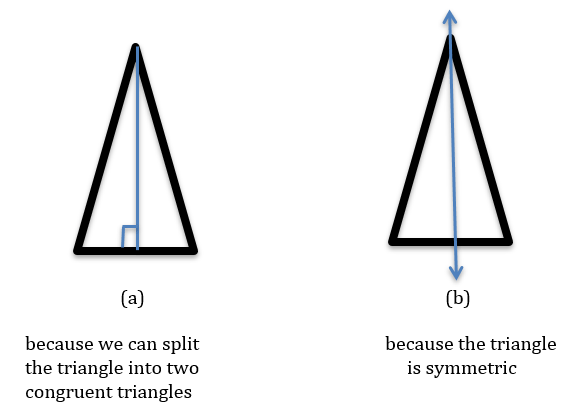
Therefore, a variety of electronic instruments are often used to measure distances that are too hard to reach or extremely long. Sometimes, however, it is not easy or physically possible to measure the actual distance between objects. For example, a typical pitched roof is usually made of wooden or steel trusses in the shape of triangles. Triangles are also used to define or calculate relationships between different parts of a structure. Engineers and builders use triangles frequently in the process of designing and constructing buildings and other structures. Amazingly, this characteristic is the reason why triangles are incredibly strong and often used in structures. Since a triangle must be closed, meaning all the sides meet another side at each endpoint, the sum of three angles of a triangle must be equal to 180°. In a triangle, each pair of sides forms an angle less than 180°. Trigonometry is the study of triangles and the relationship between their angles and sides. Ability to measure length using a ruler or yardstick and angle degrees using a protractor.Familiarity with different types of triangles, including right triangles and 45-45-90 triangles (45-degree right triangle).Triangles Activity Worksheet Example Answers (pdf) Visit [ to print or download. Note: This activity can also be conducted with the older (and no longer sold) LEGO MINDSTORMS NXT set instead of EV3 see below for those supplies: a class set of rulers, yardsticks or meter sticks.a stack of textbooks, to use to line the triangle shape taped on the floor.painters tape, or other tape suitable to mark a triangle shape on the classroom floor.
Lesson 23 base angles of isosceles triangles download#
computer with USB cable, to download and transfer ev3 file.LEGO MINDSTORMS EV3 robot, such as EV3 Core Set (5003400) at alternatively, if enough LEGO robot kits are available, provide one for each student group, instead of sharing one kit with the entire class.Triangles Activity Worksheet, one per student.Triangles Activity Assessment, two per student (pre/post).Estimate the height of various objects by creating a 45° right triangle with a known base.


For example, mechanical engineers use triangles in some parts of car designs to produce frames that are lightweight and strong. Many engineers use trigonometry and geometry in their work, designing structures and objects that function well together. By activity end, students have a better grasp of trigonometry and its everyday applications. Finally, students synthesize their knowledge by applying it to solve similar problems. Students discover that they can use this method to estimate the height of buildings, trees or other tall objects.

Students measure the height of the objects using the LEGO robot kit, giving them an opportunity to see how sensors and technology can be used to measure things on a larger scale. Then, they estimate the height of various objects by using simple trigonometry. First they review fundamental geometrical and trigonometric concepts. Students learn about trigonometry, geometry and measurements while participating in a hands-on interaction with LEGO® MINDSTORMS® EV3 technology. Making GPS Art: Draw It, Walk It, Log It, Display It! Navigational Techniques by Land, Sea, Air and Space Triangulate: Topos, Compasses and Triangles, Oh My! Northward Ho! Create and Use Simple CompassesĪccuracy, Precision and Errors in Navigation: Getting It Right!Ĭlose Enough? Angles & Accuracy of Measurement in Navigation


 0 kommentar(er)
0 kommentar(er)
